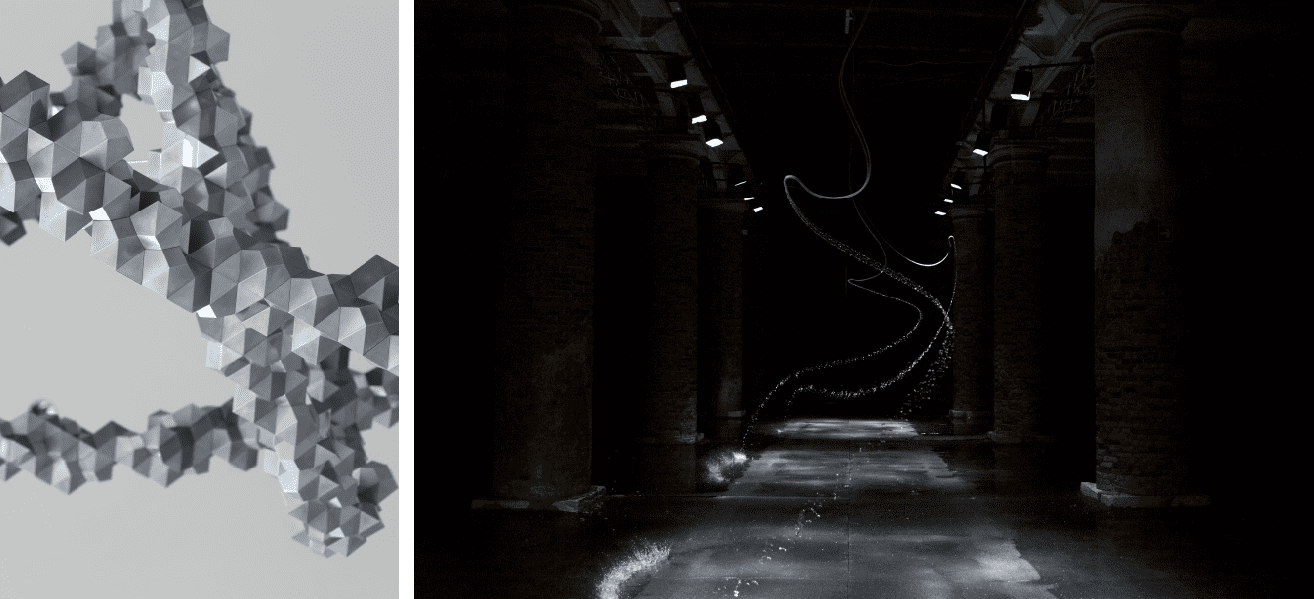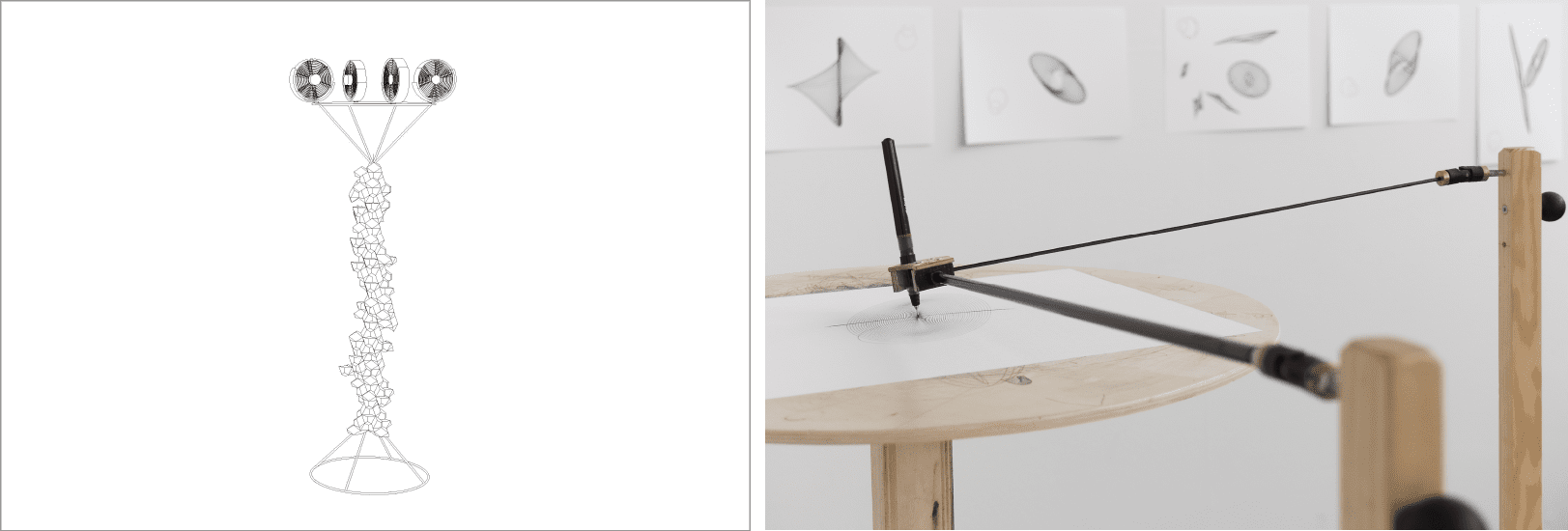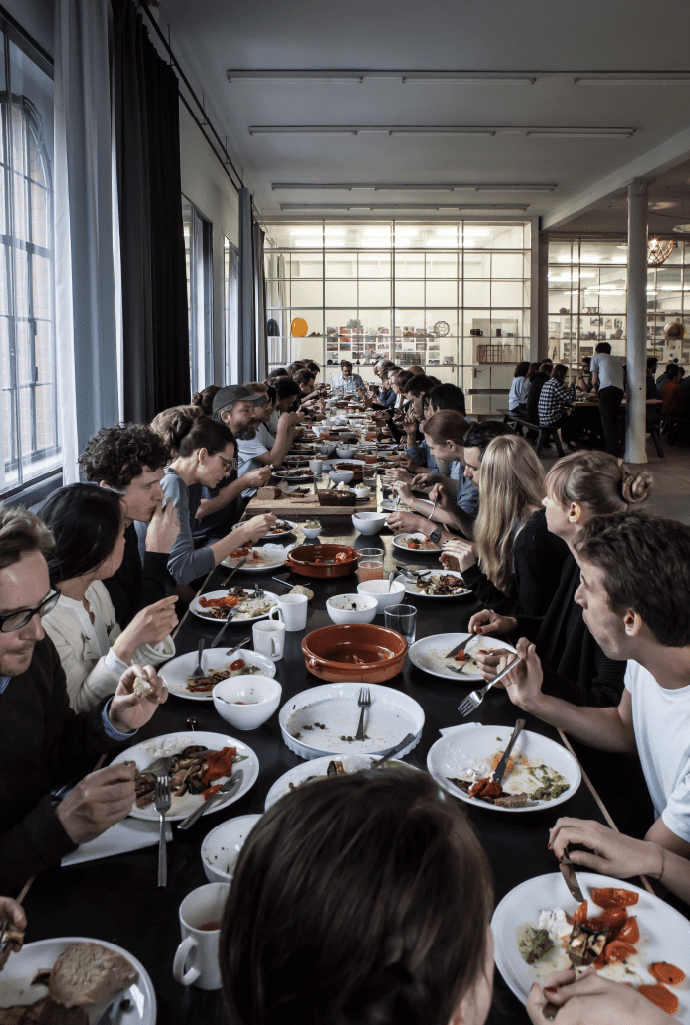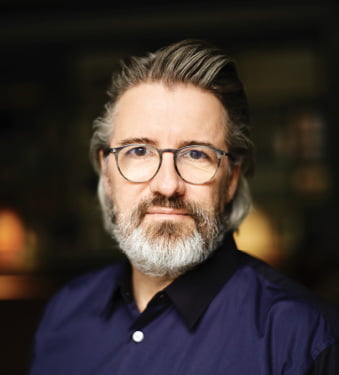Highlight

- Left|A harmonious cycle of interconnected nows (detail)
2023
Recycled Zinc alloy, steel cable
326 x 350 x 330 cm、332 x 320 x 328 cm、275 x 254 x 332 cm、303 x 281 x 324 cm (each, set of 4)
Installation view: Azabudai Hills Mori JP Tower Office Lobby,2023
Photo: Kioku Keizo - Right|Your split second house
2010
Water, hoses, pump, strobe light
Dimensions variable
Installation view: 12th International Architecture Exhibition of La Biennale di Venezia,
2010
Photo: Christian Uchtmann
1Your split second house – a large installation using water
Your split second house (2010), which uses strobe lights to illuminate the moving trajectories of water droplets as they fall through a dark space with a ceiling height of 5 meters and a length of over 20 meters, is the recreation of a work originally exhibited in 2010 for this exhibition. This abstract act of drawing with water and light elicits an understanding of the beauty inherent in Eliasson’s long-standing interest in geometry.

- Left|The air we breathe (conceptual drawing)|2023
- Right|The endless study
2005
Wood, rubber, metal, mirror, paper, pen, stamp
235 x 130 x 130 cm
Installation view: Lunds Konsthall, Sweden, 2005
Photo: Terje Östling
2Fifteen works of art on display for the first time in Japan, including the new The air we breathe, on display for the first time in Japan
Created especially for the exhibition, titled The air we breathe (2023), utilizes the same modules and recycled material as the artwork in the Mori JP Tower. These two artworks are the first created by Olafur Eliasson specifically from recycled materials, marking an important milestone in the Studio’s ongoing sustainability efforts.
Other works on display for the first time in Japan include a selection of the artist’s works that deal with drawing in an expanded sense, including a series of drawings created in the desert of Qatar using natural energy such as sunlight and wind and The endless study (2005), a drawing machine that operates solely on pendulum power which will generate drawings throughout the course of the exhibition.
3First collaboration with Studio Olafur Eliasson Kitchen in Japan
On the occasion of the exhibition, Azabudai Hills Gallery Cafe is collaborating with Studio Olafur Eliasson Kitchen to create a special menu using local ingredients from the Tokyo area. A chef visited Eliasson’s studio in Berlin to work alongside the SOE Kitchen team and co-create an original menu for this exhibition. Visitors will be able to experience the studio‘s family-style cooking with a range of innvoative dishes. The SOE Kitchen’s environmentally-focused methodology is also a testiment to their dedication to the environment.
Lunch at Studio Olafur Eliasson Kitchen, 2017
Photo: María del Pilar García Ayensa

Artist Profile
 Photo: Lars Borges
Photo: Lars Borges
Olafur Eliasson
Olafur Eliasson Born in 1967, raised in Denmark and Iceland, Olafur Eliasson is now based in Berlin and Copenhagen. He founded Studio Olafur Eliasson in Berlin in 1995, which has developed into a diverse group of professionals, including craftspeople, architects, archivists, researchers, art historians, chefs and programmers. In 2014, Eliasson and architect Sebastian Behmann founded Studio Other Space to explore art and architecture. Eliasson has had solo exhibitions in major museums around the world, including in Kanazawa and Tokyo, Japan. He frequently participates in major international exhibitions and remains a leader of the contemporary art world’s efforts to raise awareness of climate change. In 2019, Eliasson was appointed as a Goodwill Ambassador of the United Nations Development Programme. He was awarded the 34th Praemium Imperiale (Sculpture) in 2023.

